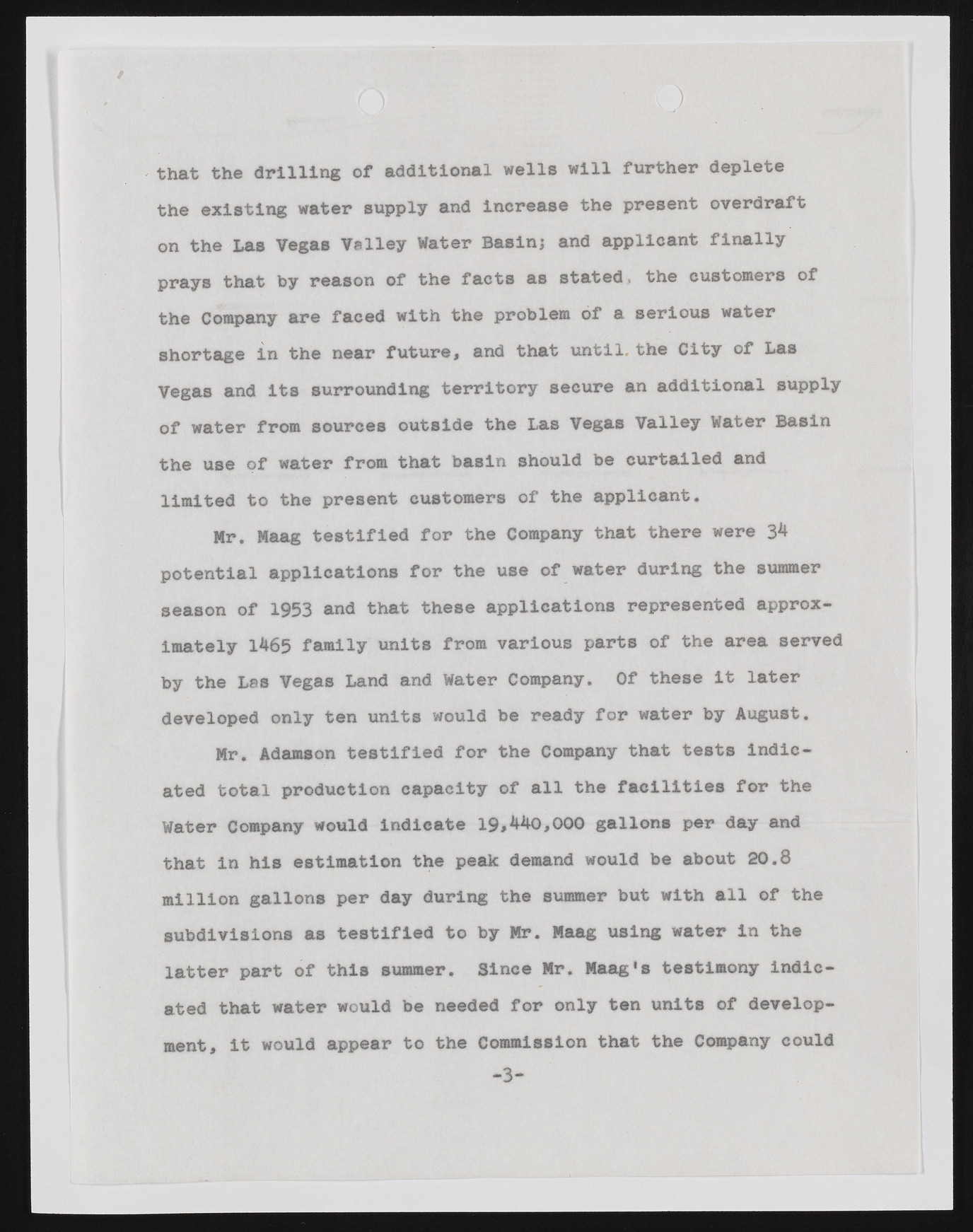Copyright & Fair-use Agreement
UNLV Special Collections provides copies of materials to facilitate private study, scholarship, or research. Material not in the public domain may be used according to fair use of copyrighted materials as defined by copyright law. Please cite us.
Please note that UNLV may not own the copyright to these materials and cannot provide permission to publish or distribute materials when UNLV is not the copyright holder. The user is solely responsible for determining the copyright status of materials and obtaining permission to use material from the copyright holder and for determining whether any permissions relating to any other rights are necessary for the intended use, and for obtaining all required permissions beyond that allowed by fair use.
Read more about our reproduction and use policy.
I agree.Information
Digital ID
Permalink
Details
More Info
Rights
Digital Provenance
Publisher
Transcription
1 that the drilling of additional wells will further deplete the existing water supply and increase the present overdraft on the Las Vegas Valley Water Basinj and applicant finally prays that by reason of the facts as stated* the customers of the Company are faced with the problem of a serious water shortage in the near future, and that until, the City of Las Vegas and its surrounding territory secure an additional supply of water from sources outside the Las Vegas Valley Water Basin the use of water from that basin should be curtailed and limited to the present customers of the applicant. Mr. Maag testified for the Company that there were 34 potential applications for the use of water during the summer season of 1953 and that these applications represented approximately 1465 family units from various parts of the area served by the Las Vegas Land and Water Company. Of these it later developed only ten units would be ready for water by August. Mr. Adamson testified for the Company that tests indicated total production capacity of all the facilities for the Water Company would indicate 19,440,000 gallons per day and that in his estimation the peak demand would be about 20.8 million gallons per day during the summer but with all of the subdivisions as testified to by Mr. Maag using water in the latter part of this summer. Since Mr. Maag's testimony indicated that water would be needed for only ten units of development, it would appear to the Commission that the Company could -3-

